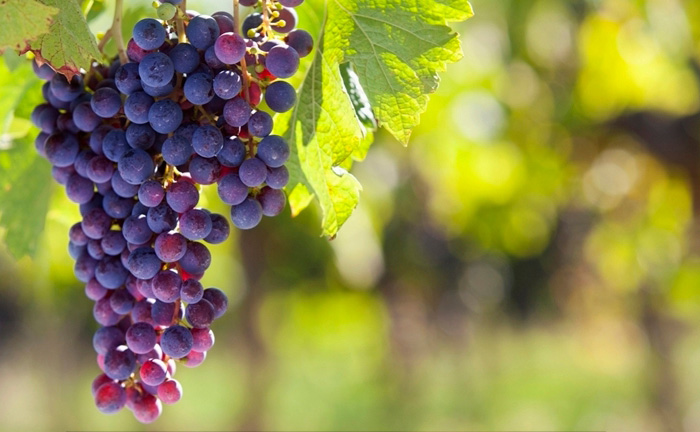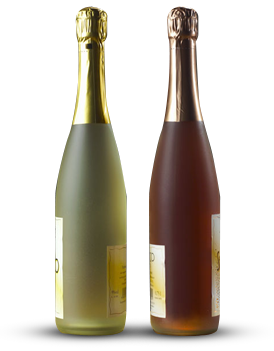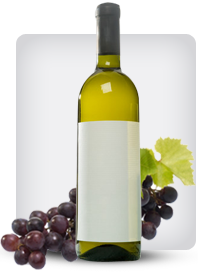

Category: Malbec Wine
Make Your Unique Wine At Home
Posted onPrice of wine and spirits is increasing day by day. It is not legal to your own spirits and it is not so easy, needing some form of distillery equipment. But wine is different and of course easier to make.
My father always made his own wine, and whilst it was cheaper to make than to buy, there was a waiting time between brewing and drinking! Once made, however, you have 6 bottles of wine and as long as you begin a new brew about once every two weeks, you will never run out! The one thing you will find with making your own wine is that it does not taste the same as wine purchased at the store. Their wines are refined with this and that to give them a specific flavour, smell and overtone. Your wine will taste raw, and decidedly fruity.
So how easy and cheap is it to make your own wine? Well relatively cheap, and easy – although decidedly messy! You will need 4 or 5 gallon demi-johns (a large glass jar required for fermenting the wine), 6 bottles, corks, a corking machine, labels, tablets for clearing and yeast. These are basic equipment requirements and can be purchased for around £20 – that is 4 bottles of good wine. With this equipment you will make batch upon batch of delicious home made wine. All you pay for from now on is your ingredients!! You make back your £20 from the cash you will save from not buying wine from the store, and therefore with your first 6 bottle batch of wine you already begin to save money, afterwards you are saving £30 with each batch!
What ingredients do you need? Sugar is a must, as is yeast – these cost a few pounds. After that, your costs are whatever you want them to be! I have made wine from pineapples, grapefruit, raspberries, home grown strawberries, and best of all black currant cordial!!!!! This was my dad’s recipe, and I am now going to share it with you (luckily he doesn’t read my articles – I hope!):
1 large bottle of supermarket brand cordial (1 litre)
3 lb sugar
Yeast and nutrient
(These ingredients will cost £3 and will make 6 bottles of wine – it is a rose that is quite sweet and powerful, but smooth and well balanced also)
Dissolve the sugar in warm water add cordial and boil for 20 minutes – stirring frequently. This kills preservatives. Allow to cool. Pour into your demi-john. Add yeast and nutrient. When ferment dies down, top up to shoulder and continue to finish.
Leave it to ferment for around 8 weeks, somewhere warm but not hot. When you return to it, you will find a clear pink liquid that tastes just great. Not only is this a cheap wine to make, but also clears fantastically due to the fact that there is not any fruit pressing involved in the process and therefore no “bits” in the mixture.
You can now syphon it into the bottle and enjoy!! Let me know how you get on.
Related Malbec Wine Articles
How to Spot Counterfeit Wines
Posted on“Keep clear of wine I tell you, white or red, especially Spanish wines which they provide and have on sale in Fish Street and Cheapside. That wine mysteriously finds its way to mix itself with others.” Chaucer, The Canterbury Tales (14th Century).
Chaucer, evidently a suspicious man, would no doubt be amazed at the sophistication of counterfeit wine production in the 20th and 21st century. As in both the art and antique world, rogue elements have been attracted by fine wine’s high prices, so much so that wine counterfeit trading on the secondary fine wine market has risen to a worrying 5%, according to Wine Spectator magazine.
It’s important to note of course that counterfeit or fake wine can also cover doctored or illegally blended wines. For the purposes of this article we are concentrating on the particular band of black marketers who devote themselves to the manufacturing, distribution and selling of fraudulent fine wines.
So how do you spot a counterfeit bottle?
LABEL
Many leading estates have their wine labels posted on their website. Failing this you can search for the wine label via Google Images (take care to ensure the website you end up on is reputable). Benchmark the website label with your own. In the case of a bottle in your possession, remember if a wine is old, a perfect label is often a worrying sign…
CORK
Does the cork look unusually young? Corks, like bodies, become brittle with age. If your bottle purports to be 15/20 years old, does the cork look of a similar age? (to complicate matters slightly, wine collectors can, and do, recork wines occasionally).
CAPSULES/FOILS
Capsules can be lead, wax aluminium, or plastic. Make sure your capsule is of a type (and colour) that the wine estate or Chateau uses (or used).
BOTTLE SHAPE
Look at the wine estate’s website again. Does the shape of your bottle concur with the bottle shape on the website? This is a crude method, but remember that fine wines are generally found in Burgundy (sloping shoulder) or Bordeaux (angular shoulder) shaped bottles.
Finally, make sure you buy from established, reputable sources.
Find More Malbec Wine Articles
The Wine Glasses For Customers
Posted onWhen you are going to be buying promotional wine glasses for your customers, there are several things to consider. It is not as simple as just buying coffee mugs for customers, there is much more to it than that. You need to consider several things when buying promotional items for your customers.
Wine glasses need to be made out of certain glass because if the wine glass is made from cut or fused glass, it will interfere with the taste of the wine. Brown glass and lead crystal glass are considered the best types of glass for wine. Lead crystal glasses are considered the best glasses for wine because they look good and are the best material for the flavor of the wine.
The shapes of the glasses are very important to keep the flavor and the aroma at its highest level. In order to qualify as a wine glass, the opening of the glass must not be wider than the widest part of the bowl of the glass. The wine glass also needs to have a long stem to keep fingers from smearing the glass, and the glass stem prevents your hand from warming the wine, as is found with brandy glasses and their short stems.
Red wine glasses have a rounder and wider bowl which increases the rate of oxidization, which subtly alters the flavor and aroma. Oxidization is better for red wines than white wines, hence the different glass.
White wine glasses can vary greatly in their size and shapes. These glasses will be designed so that there is minimal oxidization because this is not something that you want with your white wine. These glasses have smaller mouths, and that reduced surface area reduces the overall rate of oxidization. These glasses are also used for champagne since you do not want much oxidization with champagne either.
When you are giving away promotional glasses, you want to make sure that you give your customers glasses that they will want. While you will always have your company name and logo on the personalized glasses, you should ensure that you give customers who drink red wine, red wine glasses, and vise versa for white wine glasses. This ensures that the glasses will be used on a regular basis by your customers, and that gives your brand the most exposure which is very important.
Six Basic Steps to Make Wine
Posted onDo You Know the Basic Steps to Make Wine? These Winemaking Instructions will Test Your Wine Savvy
All wines are made differently, where the winemaking process is easily adapted to the different grape cultivars that exist. While the process of making wine is one and only, there are many variations that you can apply to better suit the style of wine you wish to brew, and the type of grape varietal that you’ve harvested for your winemaking.
Below you will find the basic wine making steps and instructions to achieving a delicious bottle of wine. You can follow this to the t, or tweak it in your best knowledge to improve the quality and taste of your resulting brew.
1) Sanitization
Alike other processes of food and beverage production, all materials and consumables must be ridded of bacteria and natural yeasts, which can alter or throw off the quality and flavor of your wine. To eliminate harmful microorganisms successfully, use cold water to wash your produce and allow to air dry. Next, prepare a solution made of 5 crushed Campden tablets, in half a gallon of water. Cover al surfaces with the mixed solution, let act for ten minutes and rinse. Allow surfaces to air-dry thoroughly before you begin using your workstation.
2) Crushing
In winemaking, crushing is done to create a must (liquid and solids) out of the grapes. While crushing is generally achieved with the use of a crushing grate, it used to be traditionally done by feet stomping. Nowadays, tools like crushing grates or wooden paddles allow us to obtain the same result, with much less space and physical effort.
For white wines, grapes that are crushed must then be separated from their skins, stems and seeds (also called lees) in order to prevent the extraction of color into the juice and wine-to-be. For red wines, the lees are left in the must to incorporate tannins (the pigment responsible for red wine color) into the brew.
3) Preparing a Starting Liquid
In order to have an efficient fermentation process, you must make a starting liquid with the wine making yeast that you have chosen. To prepare a starting liquid, allow 24hrs for yeast to wake. Mix yeast, with a jug of lukewarm water and sugar. Cover and let sit for a day. In the meantime, place the must and/or grape juice in a primary fermentor; mix in 4 crushed camped tablets and cover. . If desired, incorporate two crushed Campden tablets to rid your crushed grapes of any bacteria or unwanted yeasts from interfering with the wine fermentation.
4) Fermenting
Once your starting liquid has rested for a day, you’ll see foam forming at the top. Incorporate the liquid to the primary fermentor along with the must (for red wines) and/or grape juice (for white wines). A yeast nutrient can also be added at this point. Top container off with water up to the 5.5gal mark. Do not mix or stir. Cover.
5) Fermenting II
After 2 days have elapsed, you must now mix in the fermenting liquid twice a day. Do this until a week of fermentation is complete, or modify this step according to the type of wine that you are making. Alterations will include temperature conditions, length of fermentation and other details in the process.
6) Racking
Once the grape juice has been made into wine via fermentation, you are now ready to rack the wine and eliminate sediments. If you are making re wine, make sure to remove the pomace (or left over seeds, stems and skins) that float on the surface of the fermentor. Extract any retained juice by using a mesh bag to squeeze the liquid through. Using a hose, siphon the wine into a carboy, making sure to leave any sediment in the bottom of the primary fermentor.
Top off carboy with water if necessary (up to measured line), and set up a moistened airlock to prevent the intrusion of oxygen in the wine. Allow the wine to sit for 4 weeks, and do a second racking to eliminate other sediments that could remain in the wine. A third racking might be necessary for heavily-sedimented red wines, or if you wish to clarify your wine further. Clarifying agents can also be used to eliminate the need for a third racking, yet many winemakers recommend doing this to achieve a smooth, nicely bodied wine.
Following the racking, you’ll bottle and age. Make sure to adapt the aging process to the style of wine that you wish to make. To your winemaking success!
More Malbec Wine Articles
How to Look Like a Wine Expert
Posted onEver wonder why you see wine connoisseurs stick their noses into their wine glass when the wine steward brings a new bottle of wine to the table? They are “tasting” the wine with their noses.
Believe it or not, your tongue can only taste four things: sweet, salty, sour, and bitter. All the other nuances of taste actually come through a complicated relationship between taste and smell. It is the nose and the nasal passage at the back of the throat that make what we taste in our mouths flavorful.
Inspecting and smelling the cork and sniffing the wine lets the person who ordered the wine evaluate it before putting into his or her mouth. If the wine has been spoiled, these two steps will usually reveal the problem.
Improper wine storage or contamination with certain bacteria can make a wine taste perfectly terrible. You wouldn’t want to put it in your mouth.
After showing you the bottle and removing the cork, the sommelier, or wine steward, will hand you the cork to inspect and sniff. If the cork appears to have deteriorated or smells bad, you should immediately refuse the wine.
If all appears to be well with the cork, the sommelier will pour a small amount of the wine into your glass.
Keep the base of your glass flat on the table and swirl the wine gently around. This mixes air with the wine and vaporizes the complex aromas. Quickly lift the glass and stick your nose into the glass as far as you can and smell the wine.
Some people say that keeping your mouth open while you sniff the wine will help you perceive the full aroma.
When a wine is badly “flawed,” it will often be immediately apparent in it’s “nose,” which is the term wine lovers use for it’s smell. If the nose of the wine is not inviting, and you aren’t immediately tempted to taste it, don’t hesitate to return the bottle to your wine steward. You should immediately be offered a replacement bottle.
Keep in mind that if there are strong scents around you, they can compete with the wine you are evaluating. If you or the person next to you are wearing strong perfume, this can throw off your nose. If there is pungent food being served nearby, this can also affect what you smell in the wine glass.
Once your nose has had first crack at the wine, and the wine has passed the nose test, then take a sip and swirl the wine around in your mouth. Give the sommelier a nod if you approve, and only then will he proceed to serve your chosen wine to your guests at the table.
Related Malbec Wine Articles
popular posts
-

Merlot Blends with Petit Verdot: A Symphony of Elegance and Structure In the world of fine wine, blending is an art form that allows winemakers to craft complex, balanced, and memorable bottles
1-09 2026While classic Bordeaux blends often feature Cabernet Sauvignon as the backbone, a compelling and increasingly celebrated partnership exists between two other noble varieties: the Read More
-

Why Pinot Noir is Difficult to Grow: The Heartbreak Grape’s Demanding Nature Pinot Noir, often called the “heartbreak grape,” is one of the world’s most celebrated and sought-after wine varieties
1-08 2026From the hallowed slopes of Burgundy to the cool coasts of California and New Zealand, it produces wines of unparalleled elegance, aromatic complexity, and Read More

